In 2006, Yeezus, The God MC, The Teacher, and Nasty Nas cut a posse track inspired by a classic. Learn how the aptly named track celebrated an icon and birthed another.
This weekend, the Nike Air Force 1 begins its yearlong 40th anniversary celebration through a contemporary collaborator: Billie Eilish.
Born on the blacktop and beloved by hip-hop, the Air Force 1 is guarded by gatekeepers as if it’s a cultural castle. That’s mostly because it is. Reimagined by Billie through her “Mushroom” makeup, the always-strapped, vegan variation is a record scratch to OGs. While electing Eilish as first to sing “happy 40th birthday” may seem blasphemous to purists, challenging tradition is as hip-hop as it gets.
That’s because chopping up an oldie draws more attention than simply running back the same track. While Stüssy streetwear collabs, luxury Louis Vuitton takes, and glossy mid top makeups will play without pause in 2022, it’s easy to forget that many of these remixes were panned or caught flack when they were first unveiled. When flipping a classic, you bear both the burden and privilege of familiarity.
When the Air Force 1 turned 25 in 2007, Nike felt that weight. Rather than take the shoe into a new space, they doubled down on the bass that made it matter in the first place.
Calling in Cornerstone, the marketing agency built by FADER co-founder Rob Stone, the Swoosh sought out a way to amplify the birth of the basketball shoe that revolutionized the market when introduced in 1982. Rather than relying on hoops, high tops, or high-budget media spends, Stone saw another opportunity.
The return of the boom-bap.
No Money, No Problems
To Stone, the Air Force 1 didn’t need a commercial to catapult what was already a market mainstay on its 25th birthday. It needed a song.
And if done correctly, the sonic weight of a single could move feet and units more than any agency script.
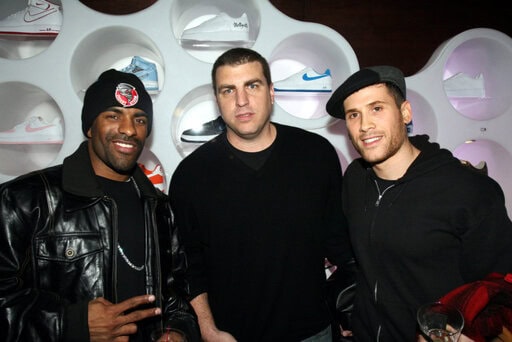
“We got hit up by Nike to celebrate the Air Force 1 25th anniversary,” Rob Stone tells Boardroom. “Our pitch to Nike was to not spend any money in media because the original Air Force 1 was word of mouth and hip-hop.”
Leaning less on ads airing during Rob & Big and more into the essence of Stretch & Bob, Stone and his team sought to create a track that spoke to the spirit of the Air Force 1 without name-dropping Nike the whole time. This wasn’t supposed to look like paid content, but rather sound like pad content by assembling the best to ever bless a mic.
“Let’s get on radio, on mix shows, and into rotation,” Stone recalls pitching at the time. “And never buy a dime of media. Let it take on a life of its own.”
When considering the MC most associated with white-on-white Air Force 1s, hip-hop, and “business, man,” one name instantly soared to the top of Stone’s list. However, shooting for the moon would set the stage for landing in the stars — accidentally setting up the 2000’s most influential entry into the sportswear universe.
Roc Boys
In 2006, Jay-Z symbolized hip-hop unlike anyone else. After a 10-year run of chart-topping albums, brand-building, and putting on new artists in the market, the iconic rapper “retired.” He became president and CEO at Def Jam, marking a corporate takeover.
Most would have shelved sneakers for hard bottoms when transitioning from Baseline to the boardroom. But while Hov threw out his throwbacks, he kept rotating retro classics with designer sneakers in his new, buttoned-up role — most famously with his signature Reebok S. Carter. The low-top look paid homage to the Gucci Tennis ’84, an Italian-made status symbol for hustlers who came up in the Paid in Full era.
Jay had been inked to Reebok since 2002, but the contract was set to expire. His rap retirement theoretically made him less visible on stage, but much of Hov’s cultural sneaker cache came from equity tied to the Nike Air Force 1.
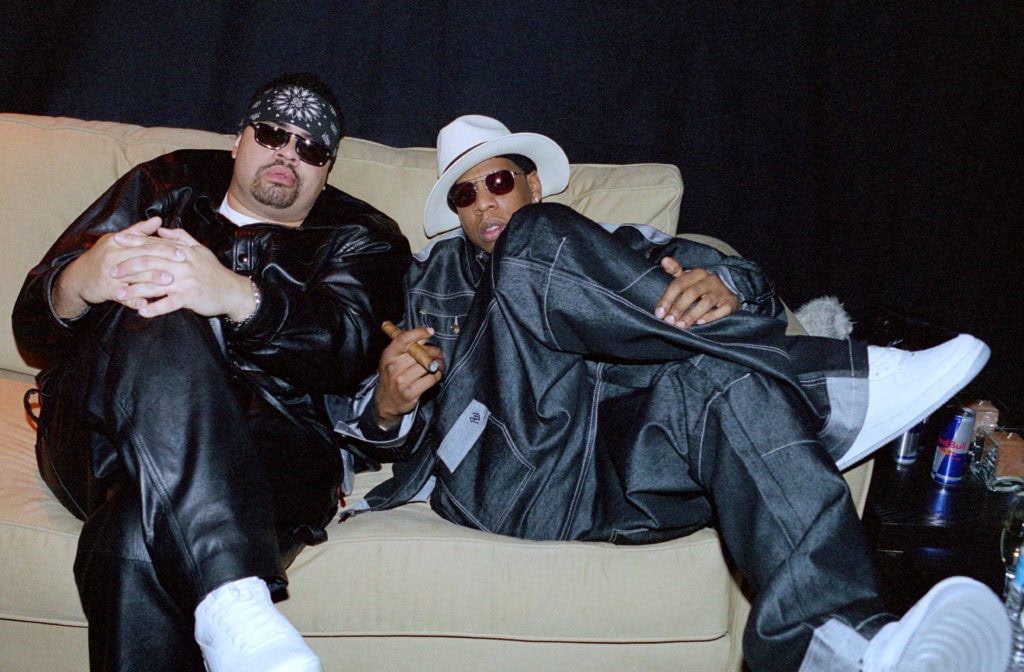
Because of this, Jay was the white whale for Nike and Cornerstone when it came to making a song about sneakers that wasn’t really about sneakers.
A comeback verse from the Jiggaman, of which he’d handed out few, would create the word-of-mouth buzz both brands sought after while staying true to the shoe’s roots and recent branches.
“We wanted Jay on the record, and we came close,” says Stone. “Jay would’ve done it, but he was asking for more from Nike, and we couldn’t close the deal.”
A bigger bag from the shoe company?
No, he wanted a broader deal.
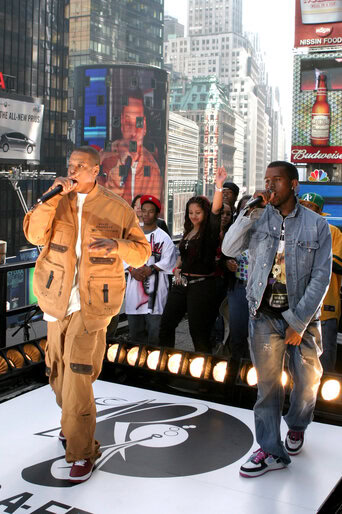
“It’s typical of Jay because he’s very particular about his deals — and rightfully so,” notes Stone. “He knew saying no would lead to bigger money for him later, and it did. He had just started Roc [Nation] Sports at the time and was just coming out of the Reebok deal. He knew he could do a verse if they paid him, but he wanted a bigger conversation. So, credit to Jay-Z for that.”
Jay-Z’s patience unintentionally led Nike and Cornerstone down the Roc-a-Fella ladder.
“That was the reason we ended up going with Kanye,” says Stone. “That started the Kanye [and] Nike relationship.”
With Kanye in the clutches, Stone and his team brought on rap royalty from the ’80s and ’90s to connect all audiences in authentic fashion. The God MC, Rakim Allah, and The Teacher, KRS-One, symbolized the early innovation the shoe stood for while Nasty Nas bridged the gap between Gold School and Shutter Shades.
All they needed was a beat.
A Tale of Two Tracks
To coincide with the Air Force 1’s 25th anniversary, the song wouldn’t release until Feb. 20, 2007.
A Beaverton budget and no allocated media spends meant Stone and his team at Cornerstone could bring on any beat maestro to lace this posse cut. The first choice was obvious.
“We brought on Rick Rubin to produce the track,” Stone says.
As Ambrosia For Heads notes, Rubin played a part in the production of Run-DMC’s “My Adidas” two decades prior. His resume in rap and rock was (and still is) as strong as any producer in the game — possessing the power to disrupt radio waves and win over unexacting audiences.
Ironically, the man now known for being mostly barefoot was tasked to build a beat for Nike and a who’s-who list of MCs. Rubin chopped up George Benson’s “Give Me the Night” for a left-leaning statement song that was too outspoken for even the best to ever master the spoken word.
“None of them really liked the original Rick track,” admits Stone. “Nas pulled me aside and was like, ‘Am I being punked right now?’ Because it wasn’t a traditional hip-hop track.”
Understanding crossover radio more than most thanks to his work at Arista and relationship with The Notorious B.I.G., Stone phoned a friend who helped shape the sound for Ready to Die and Life After Death.
“I got DJ Premier to work on it before he went to Europe, and he delivered the track we ended up using,” shares Stone.
The behind-the-boards half of Gang Starr put his foot down with, well, force.
Possessing a black belt in beat-making, Preemo remixed Rubin’s original version. He kept all four verses and set them to a sample of Carl Douglas’ “Dance the Kung-Fu,” the not-so-famous follow-up to the surging single “Kung-Fu Fighting.”
Fittingly, the result was kick-ass. In signature fashion, Premier chopped up lines and soundbites from each MC, making a cut-and-paste hook that was not only on-brand for the artists but also the campaign message.
After two tries, the song was finished: “Classic (Better Than I’ve Ever Been) (DJ Premier Remix).”
Nike had their hit, now they needed to build the buzz. On Dec. 10, 2006, the Beaverton brand rented out Gotham Hall in the Mecca for an industry event that played like a fantasy to any hip-hop head. At the star-studded party, Swoosh execs watched with pride as Kanye, Nas, KRS, and Rakim rocked the stage in premium pairs of Air Force 1s, debuting the the song Stone engineered.
After the event, then-Nike CEO Mark Parker hopped on a private jet with the replacement rapper, Kanye West.
Flying high in a friendly sky, the exec and the artist who just finished celebrating the past started drafting the future — sketching a signature styled strictly for fashion, fusing sport with hip-hop not just in adoption but rather ideation.
Fourteen months later, the world would see it for the first time.
Award Tour
Two years after Rob Stone recruited Rakim, KRS-One, and Nas to rap on a record about the Air Force 1, all entities were up for incentives that went beyond the bag each of them previously received.
“The song was nominated for a Grammy,” recalls Stone. “The only reason we lost was because Kanye had another song that won that category.”
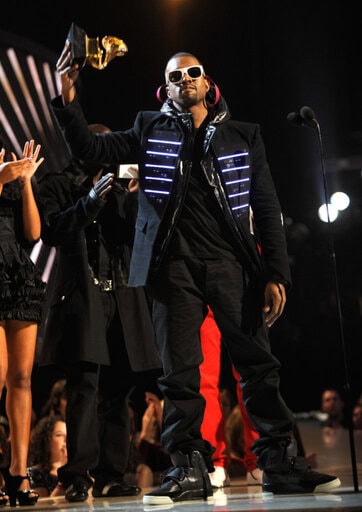
At the 50th Grammy Awards in 2008, West won best rap performance by a duo or group for “Southside” with Common, beating out “Classic (Better Than I’ve Ever Been).” That night, Kanye took home four Grammys, shooting 50% from the field thanks to a show-best eight nominations.
Due to the success of his album Graduation, Kanye literally stole the show, too, by performing heartfelt adaptations of “Hey Mama” and “Stronger” and mourning the loss of his mother on the Staples Center stage.
On his feet were the shoes sketched while airborne with Mark Parker: a wear-test sample of the first-ever Nike Air Yeezy 1.
“We didn’t want people to see it until we decided the right time,” Nike designer Mark Smith told Nick DePaula in 2009. “The Grammys felt like the right time to do something, and we were far enough along on the design that we felt like it was going to evolve, but not change.”
The shoe sent the internet into a frenzy. For the majority of that year’s Glow in the Dark Tour, West performed on stage in sample styles of the Air Yeezy 1, appearing months later in said shoe at Nike’s Human Race event back in L.A.
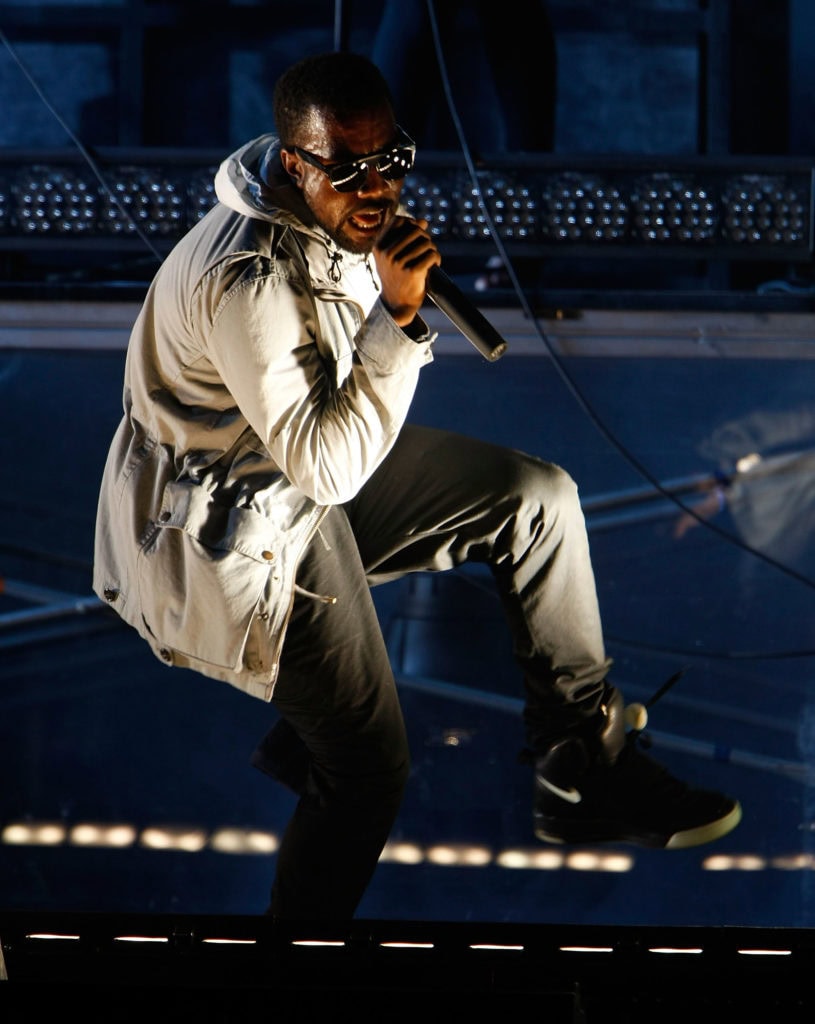
While Nike knowingly has big plans for the 40th anniversary of the Air Force 1, led by Eilish’s collaboration releasing this weekend, the tale of the tape for the company, the silo, and music means much where history is served.
When considering Cornerstone’s architecture of the 25th anniversary campaign, the blurred lines between art and advertising were as pioneering as the shoe itself. (Stone notes that “Classic” would have been “the first time a brand song won a Grammy.”)
The Air Force 1 is now moving to the beat of another drum, but driving it forward is yet another cutting-edge artist in Eilish, who just performed at Coachella as the youngest-ever headliner. It isn’t all that different from the threading of “Classic,” considering modern sportswear was changed by an artist who wasn’t originally meant to spearhead the campaign in the first place.
Sometimes the more things change, the more they stay the same.